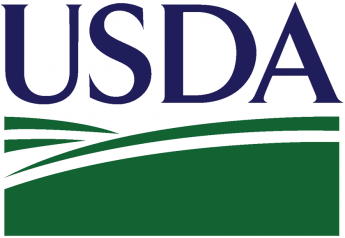Adopting More Soil Conserving Practices Can Reduce Crop Insurance Costs

Advocates of conservation agriculture have long insisted that farmers who adopt use of practices such as cover cropping and no till or reduced till cultivation can improve the water-holding capacity of their topsoil by adding organic matter, which helps to make their crops more resilient in the face of extreme weather events. This attribute can not only benefit individual farmers by reducing their yield variability on a year-by-year basis, it can benefit society and taxpayers by reducing the need to make indemnity payments to U.S. farmers who participate in the federal crop insurance program.
For many years, this claim has been based largely on anecdotal evidence or single-farm case studies, but new research was recently published which provides a much firmer empirical basis to document this important benefit from improving soil health. A provision of the 2018 farm bill (Section 12618) required USDA to identify available departmental data that could be used to evaluate the implications of conservation practices on farm and ranch profitability. Subsequently, USDA signed a Memorandum of Agreement (MOU) in the fall of 2020 with the Meridian Institute (the AGree initiative) and the University of Illinois to undertake a study using farm-level records from six Midwest states with appropriate privacy safeguards established, to determine if the use of cover cropping or reduced tillage had a measurable impact on whether a given field would generate a prevented planting claim from the record Midwest rains that hit the region in the spring of 2019.
The principal researchers involved in this work, Dr. Bruce Sherrick from the University of Illinois and Dr. Rob Myers from the University of Missouri, quickly determined that USDA records they had been provided did not include sufficient information to determine if such practices had been widely implemented by individual farmers prior to normal planting season that year.
Consequently, they had to seek third party data to match with the field-level records on crops and yields provided by USDA to supplement their dataset for analysis. For this purpose, they turned to Indigo Ag, a private agricultural tech company, to obtain information about field-level use of cover cropping and no-till practices in the six-state region based on remote sensing information. Of the nearly 2.6 million usable land records provided by USDA (those with Common Land Unit (CLU) identifiers, just under 43,000 fields were identified as having been cover cropped and no-tilled for at least one year prior to 2019.
The analysis found that fields that had used these two practices for at least one year were associated with a reduction in the likelihood of triggering a prevented planting claim by 24 percent compared to fields on which neither practice was utilized. The researchers had also hoped to analyze the yield impact of the adoption of these two practices in 2019, but USDA had not finalized its field level yield information for 2019 at the time that the massive dataset was transferred.
The authors also crafted a set of recommendations for how USDA collects and manages its data. They include:
• The Department should come up with an effective way of collecting cover crop and no-till usage data on a field-by-field basis,
• USDA should come up with a more consistent way of collecting relevant data at the geographically identified boundary level,
• USDA should pursue standardization and synchronization of time stamps for reported crop management practices,
• USDA should explore use of robust available sources of weather data matched to geographic land units,
• USDA should develop an approach that leads to one common data set for each land unit, and
• USDA should consider developing an approach to allow researchers to more readily access USDA data while maintaining producer confidentiality.
Their work was released on March 2nd and discussed in a webinar presentation. The paper can be found at the AGree website here: https://foodandagpolicy.org/wp-content/uploads/sites/17/2023/03/Conservation-Crop-Insurance-Data-Pilot-Results-1.pdf. The authors plan to submit their work to one or more academic journals for consideration at a later date.
At roughly the same time as the AGree paper was released, the American Journal of Agricultural Economics (AJAE) published an article which examined a similar topic, this time using county-level crop insurance records and satellite-based information about cover cropping
usage, to explore the relationship between adoption of cover cropping and prevented planting claims. Undertaken by four agricultural economists at three land-grant universities (Sunjae Won, Roderick Rejesus, Barry Goodwin, and Serkin Aglasan), the research utilized a county-level panel data set from 2005 to 2016 based on loss data published by USDA’s Risk Management Agency, matched with county-level data on cover cropping adoption and use provided by Operational Tillage Information System (OpTIS) developed by Dagan Inc.®, Applied GeoSolutions (AGS) for the same period.
Their analysis found that “county-level cover crop use has a negative and statistically significant effect on prevented planting losses”. For 2019, their estimate was that a one-percent increase in the county cover crop adoption rate in the previous period would have saved nearly $40 million in the cost of prevented planting claims, in addition to the other benefits generated for both individual farmers and the general population from higher cover cropping rates.
The authors noted that an important policy implication from this main finding is that there should be renewed outreach and information dissemination to impart knowledge to stakeholders about the “prevented planting resilience benefit” of cover crops.
Both analyses provide strong support for the notion that reduced indemnities under the federal crop insurance program can occur as a result of greater adoption of these conservation practices, in addition to the other benefits that can be realized from these practices.







